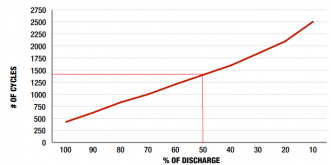EasternPromise
New Member
- Joined
- Oct 18, 2020
- Messages
- 73
Greetings,
Dumbass newb here. I've found myself in an off grid situation and playing catch-up.
My specs:
9kW Solar array ASL/CanSolar,
48V battery bank - 24x 2V Surrette deep cycle lead acid
2x Magnum Energy 400W 120/240V inverters
I'm trying to ascertain the state / degradation of the battery system. After a cloudy day I had it plunge down to 46V which if I understand correctly is the danger zone.
How do I test what state it's in and how well are the batteries performing?
Thanks all.
EP.
Dumbass newb here. I've found myself in an off grid situation and playing catch-up.
My specs:
9kW Solar array ASL/CanSolar,
48V battery bank - 24x 2V Surrette deep cycle lead acid
2x Magnum Energy 400W 120/240V inverters
I'm trying to ascertain the state / degradation of the battery system. After a cloudy day I had it plunge down to 46V which if I understand correctly is the danger zone.
How do I test what state it's in and how well are the batteries performing?
Thanks all.
EP.




